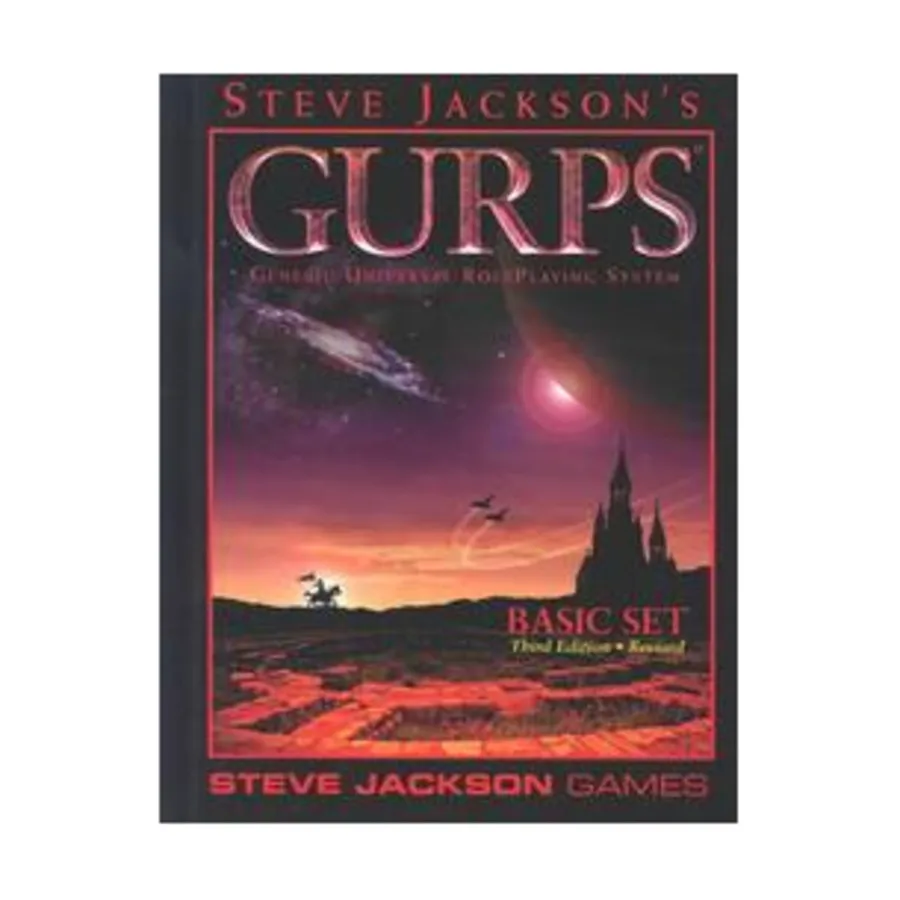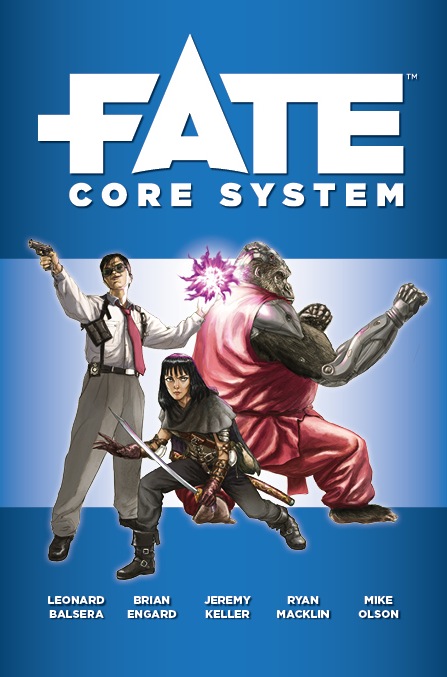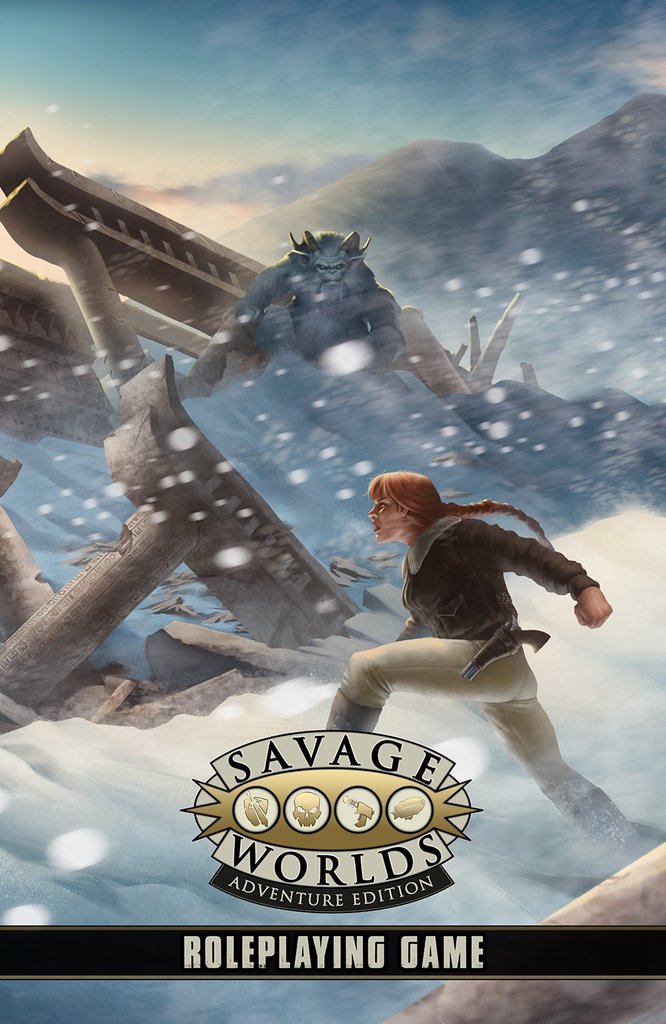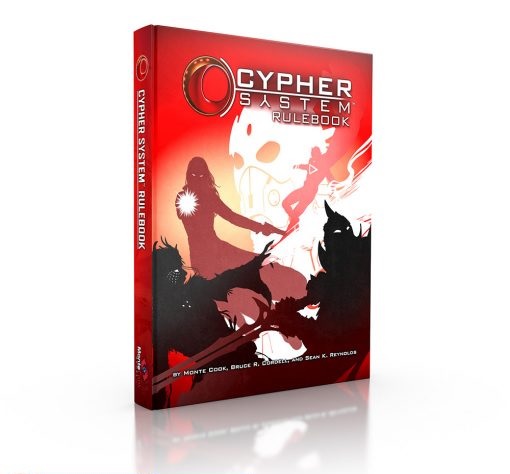Universal RPGs: One rule(set) to bind them all?
It’s a philosophical question. Can you use one set of rules for more or less any genre or setting? Or should every game’s rules be carefully tailored to its unique requirements? There are many different RPG systems out there.
There’s no right or wrong answer, and each approach has pros and cons.
Universal RPG systems are great because you can learn one set of rules and use them to run, theoretically, any game you want. While some universal systems are crunchy and others are much lighter, most are reasonably adaptable, with plenty of optional rules to help fine-tune their performance.
Plus, as we all know, there are benefits to system mastery, which makes carrying your rules knowledge from one game to another a big part of these systems’ appeal.
Universal RPG systems also often have a ‘long tail’ of supplements as they can support so many different settings. GURPS is the most notable contender here; Savage Worlds is another.
Here are a few of our favourites, plus some honourable mentions.
GURPS (Generic Universal Roleplaying System)
Designer: Steve Jackson
Publisher: Steve Jackson Games
Year: 1986
GURPS builds on Steve Jackson’s first RPG, The Fantasy Trip (TFT). It sits at the ‘realistic’ or ‘simulationist’ end of the RPG spectrum, attempting to accurately model physics and combat while retaining a simple core mechanic (roll 3D6 vs skill level).
It’s a classless point-buy system with four attributes (Strength, Dexterity, Health and Intelligence) and advantages/disadvantages to customize your character further.
further.
Besides the core rules set and supplements – loved even by non-GURPS players as fantastic, well-researched and well-written sourcebooks on their genres and topics – and GURPS versions of other games (e.g. GURPS Traveller, GURPS Vampire: The Masquerade), there are games ‘Powered by GURPS’.
These are stand-alone, single-volume RPGs with the core GURPS rules plus a setting, including Transhuman Space, Discworld, Hellboy, Prime Directive and more.
Fun fact: We have GURPS because, in the eighties, Steve Jackson wanted to buy the rights to his first RPG design, The Fantasy Trip (TFT), from its publisher, Metagames. But the asking price was too high, so Steve created GURPS. He finally picked up the rights to TFT in 2019 and published a new edition – The Fantasy Trip Legacy Edition. The games’ shared DNA is plain to see, but each has its own unique flavour.
Fudge
Designer: Stefan O’Sullivan
Publisher: Grey Ghost Press, Inc.
Year: 1992
FUDGE (now Fudge) is the ‘Free-form Universal Do-it-yourself Gaming Engine’ – a minor update from ‘Free-form Universal Donated Gaming Engine’, its original online newsgroup project name.
It’s rules-light and uses a word-based system for resolving complex actions like combat. Character traits, such as attributes and skills, are ranked on a seven-word scale: Terrible, Poor, Mediocre, Fair, Good, Great and Superb.
scale: Terrible, Poor, Mediocre, Fair, Good, Great and Superb.
Famously, it uses the ‘Fudge die’, or ‘dF’: a six-sider with two ‘+’ faces, two ‘-’ and two blank faces. (Or you can use a regular die: 1 or 2 is a minus, 3 or 4 is nothing, and 5 or 6 is a plus.) Each plus or minus moves your attribute up or down one step; you need your result to equal or better the tasks’ difficulty (rated on the same seven-word scale).
It’s a great system, and you can pick up a PDF of the original for free or spring for a later edition if you like real things (and who doesn’t like real things?). A range of excellent settings and sourcebooks supports it.
Fun fact: Let’s face it, FUDGE is a terrible name for an RPG. But it’s a whole lot better than the original Usenet project’s name: SLUG (Simple, Laid-back Universal Game). 2000’s Expanded Edition officially changed the name to Fudge and dropped the acronym.
D6 System: The Customizable Roleplaying Game
Designers: Sandy Peterson, Lynn Willis, Greg Stafford (Ghostbusters); Greg Costikyan, Curtis Smith, Bill Slavicsek (Star Wars); George Strayton (D6 System)
Publishers: West End Games (WEG), Humanoids Publishing, Purgatory Publishing, Nocturnal Media
Year: 1996 (D6 System)
West End Games premiered its D6 game engine in the excellent Ghostbusters RPG (1986). The following year it powered the first edition of the Star Wars RPG (1987). A massive hit back in the nineties, the game was so good that Lucasfilm recommended its sourcebooks to aspiring Star Wars creators … but we digress.
The system was fast, flexible and easy to use, spawning a raft of ‘hacks’. Eventually, in 1996, WEG released a stand-alone rulebook, The D6 System: The Customizable Roleplaying Game.
Roleplaying Game.
Depending on the setting, characters have six to eight attributes and roll against a target number. The second edition introduced the ‘wild die’: if you roll a six, it ‘explodes’, meaning you keep the six and roll again. As long as you keep rolling 6s, you keep rolling, and your total keeps growing.
There are many D6 books, more if you include Ghostbusters and Star Wars. They include generic setting sourcebooks (e.g. D6 Adventure, D6 Space Opera, D6 Fantasy) and licensed properties (e.g. Metabarons, DC Universe, Hercules & Xena, Indiana Jones).
Fun fact: WEG published the Star Wars RPG was published in the gap between the original trilogy and the prequels. Its sourcebooks were so good that Lucasarts used them internally.
FATE
Designers: Leonard Balsera, Rob Donoghue, Fred Hicks
Publisher: Evil Hat Productions
Year: 2003
FATE is based on Fudge. Originally an acronym for ‘Fudge Adventures in Tabletop Entertainment’, it’s now officially ‘Fate’ and is no longer an acronym.
System-wise, it keeps Fudge’s dice and verbal character traits system. It assumes every character is ‘mediocre’ at everything except for their higher-level skills and adds skill actions (attack, defend, overcome obstacles, create advantage) plus Stunts and Aspects.
Stunts are pre-made abilities that give specific benefits. Aspects are player-created and describe something about the character; players can invoke them for a bonus or a re-roll where relevant.
bonus or a re-roll where relevant.
The game involves its players as much as possible in creating (or co-creating) the story they’re playing, and it’s well-supported. As well as the core rulebook, there are stand-alone RPGS (e.g. The Dresden Files, Spirit of the Century, Starblazer Adventures, Fate of Cthulhu and Atomic Robo) and various sourcebooks (including toolkits such as accessibility, adversary, horror, space and system).
You’ll also find FAE (Fate Accelerated Edition) and Fate Condensed. Phew! That’s a lot of Fate.
Fun fact: Some call Fate a story-telling or narrative game, not an RPG, because it involves players so heavily in creating the action. Are we splitting hairs here?
Savage Worlds aka SWADE (Savage Wolds Adventure Edition)
Designer: Shane Lacy Hensley
Publisher: Pinnacle Entertainment Group
Year: 2003
Savage Worlds Adventure Edition (SWADE) is the latest version of Savage Worlds, an outgrowth of Pinnacle’s Deadlands weird west RPG.
SWADE uses a point-buy character creation system, where traits (attributes and skills) are rated by die type, from D4 (weak) through D6 (average), D8 and D10 to D12 (extraordinary). Skills, Edges, Hindrances and Powers round characters out, and while the rules are simple at heart (roll attribute plus skill plus modifiers vs a target number), there are plenty of nuances and crunch if you want it.
From the Wild Die and exploding dice (if you roll a die’s maximum value, keep it and roll again) to Wild Cards and Bennies, there’s plenty here to adjust your game’s feel and complexity.
game’s feel and complexity.
Perhaps best of all, SWADE offers a huge array of source material. There are re-releases of Pinnacle’s classic games (e.g. Deadlands), SWADE versions of other games (e.g. Pathfinder and Rifts), stand-alone RPGs (e.g. Space 1889), supplements (including bestiaries, genre sourcebooks, toolkits and companions), adventures (including the classic 50 Fathoms campaign) and more third-party books than we can mention.
Fun fact: SWADE grew out of Savage Worlds, which grew out of Deadlands: The Great Rail Wars (a miniatures game), which was a simplified version of the Deadlands RPG. And now Deadlands is a SWADE game. Circle of life, and all that.
CYPHER SYSTEM
Designer: Monte Cook
Publisher: Monte Cook Games
Year: 2015
The world would be a poorer place without Monte Cook. A geek’s geek, he was a lead designer on D&D 3e, contributor to Rolemaster and Champions, novelist, founder of Malhavoc Press and later, Monte Cook Games. Cypher System grew out of his science-fantasy RPG Numenera; at its core is a D20 roll-over system with skills, but character creation is … interesting. To crib from the rulebook, there are just five steps: choose an archetype, a descriptor, a focus and a character arc – and begin adventuring.
It’s a narrative-focused game, but the rules can get crunchy if that’s how you like your fun. The rulebook lists (and provides gear, creatures and other information) for fantasy, modern, sci-fi, horror, romance, superheroes, post-apocalyptic, fairy tale and historical games.
for fantasy, modern, sci-fi, horror, romance, superheroes, post-apocalyptic, fairy tale and historical games.
There are plenty of supplements – extra rules, adventures, settings – with Ptolus (a fantasy city setting based on Monte’s D&D 3e playtest campaign) a particular highlight.
Fun fact: Ptolus is probably the biggest RPG book ever published: the Cypher System version is 672 pages long, with another 300 available to download. Make sure you have a comfy place for reading.
But wait, there’s more!
So much more! Here’s an incomplete list of some notable universal, multi-game and multi-genre systems:
CORPS and EABA (Greg Porter, BTRC): a pair of elegant universal RPGs from Greg Porter. They’re models of clarity and simplicity, with some excellent supplements and campaign settings.
TWERPS (Jeff &’ Manda Dee, Reindeer games): The World’s Easiest Role-Playing System is a playable parody of more complex games, but soon built up a devoted following, a second edition and more than a dozen supplements.
Index Card RPG (Brandish Gilhelm, Runehammer Games): ICRPG is a simple D20 system with five full worlds in the core book: fantasy, sci-fi, weird west, ice age and supers. Plus, there are many more third-party books.
TinyD6 (Alan Bahr, Gallant Knight Games): TinyD6 is a minimalistic system that powers a range of games, from Tiny Dungeon and Tiny Cthulhu to Tiny Gunslingers, Tiny Frontiers (sci-fi) and more.
Powered by the Apocalypse (Vincent and Meguey Baker, Lumpley Games): More of a loose framework for making games than a set of rules in itself, PbtA games are inspired by Apocalypse World but run the gamut from fantasy and horror to urban fantasy and sci-fi.
Forged in the Dark (John Harper, Evil Hat Productions): Blades in the Dark was inspired by Apocalypse World but has spawned its own umbrella label. FitD games live in many genres, but all focus on tight-knit bands of (often anti-) heroes and their struggles.
Hero System (Steve Peterson, George MacDonald, Bruce Harlick, Ray Greer, Steven S. Long et al., Hero Games): Derived from superhero RPG Champions, whose core rules quickly gave birth to a range of games (e.g. Danger International, Fantasy Hero, Justice Inc.) and was eventually re-launched as a stand-alone universal RPG.
Basic Role Playing (Greg Stafford and Lynn Willis, Chaosium): Chaosium’s in-house engine has powered most of its RPGs, notably Call of Cthulhu and Runequest, but BRP also powers other games, including Other Suns and Dragonbane.
Year Zero Engine (Tomas Härenstam, Free League): More of a same-core-rules-adapted-for-many-different-games system than a designed-from-the-outset universal system, the Year Zero Engine (YZE) powers many of Free League’s RPGs, including Alien, Blade Runner, Forbidden Lands, Mutant: Year Zero, Tales from the Loop, Things from the Flood, Twilight: 2000 and Vaesen.
AUTHOR BIO
Michael’s from Sydney, Australia. Over the years he’s organized game conventions, contributed to magazines, and written supplements for White Wolf and Dream Pod 9. He hasn’t found the perfect game yet, but he suspects it’s a still-to-be-written universal RPG.
